Should you be unfortunate enough to have an accident on the Thames, the modern high speed boats that race to leave you would depart from one of the oldest intact parts of the riverside.
That is the current home of the RNLI, and is in fact the oldest Victorian era pier that is in its original location. Built around 150 years ago, it was occupied by the river police right up to 2006 when the police agreed to sell it to the river rescue division of the RNLI.
The RNLI is predominantly a coastal rescue operation, so their presence on the Thames is a bit of an aberration, but one that is the result of the Marchoness disaster 25 years ago. River rescues are usually the job of local emergency services, but it was decided that the Thames really needed something a bit more specialised.
Opened in 2002, next to the Tower on London, it moved to the former police pier in 2006. The police incidentally charged £1 for the pier, then later donated that pound back to the RNLI.
The decision to base the RNLI in the Thames was a wise one, for the Tower station has since it opened, consistently been the busiest station out of the RNLI’s entire network of 237 lifeboat stations.
Yet, while you might think that their main job is rescuing people on boats, that forms just a tiny fraction of their work. With nearly 500 rescues last year, much of their work is a marine ambulance, offering assistance to the ill or injured on other boats — or dragging people out of the river.
In fact about half their work is pulling people out of the river — people who through depression see the river as a terminal solution, or through drunkeness see it as a challenge.
Another unique aspect of the Thames Pier is that the lifeboat can be deployed within 90 seconds, as compared to the 10 minutes at coastal bases. That is due to the decision to have volunteers not so much working locally and running to the station, but having them on site for 12-hour shifts, assisted by full time paid staff. Ten staff to 50 volunteers.
As the Thames is very cold, the average 10 minute launch would spend most of its time pulling dead bodies out of the river. 90 seconds really is essential to get people out before their body shuts down from hypothermia in the river.
The average cost of a rescue incidentally comes in a just over £1,000 when you take the half million pound operating costs and divide by rescues under taken.
And those rescues are provided by what is just about the fastest boat on the river — even faster than the police boats.
What makes the boat so fast is an absence of propellers. Unlike out at sea where the propellers could be turned off for a short while when close to a person in the sea, the fast currents of the Thames called for an alternative — jet power!
The boat sucks water in from underneath the boat and squirts it out the back. Not just fast, but the lack of propellers makes the boats a lot safer when rescuing people in the Thames.
The RNLI have two of these sorts of boats, the first being essentially a prototype, but they now have a more souped up version to play with. They still want a spare, although at around £400,000 each a generous benefactor is needed.
Although allowed on to the station for a look around, the one place that was absolutely off-limits were the boats themselves. With just 90 seconds to launch after a “shout” is announced, having gawping visitors on the boats would have been a very bad thing.
What else was on offer though was a look at the changing room, with its wall lined with dry suits, boots and clothing.
It’s here that another difference from the coastal patrols became apparent — no wellies.
Unlike the coastal teams who work normal jobs then rush to the station if a rescue is needed, here on the Thames, the staff and volunteers are on standby all the time, and dressed for it.
Wellies worn for 12 hour shifts are a very bad idea, so they have PPE boots — and surprisingly light weight ones at that. So surprising, that my credit card twitched a bit when I tried them.
Also, the overalls worn are slightly different to take into account being worn for 12 hours regularly rather than just a few hours on occasion as at sea.
Some heavy helmets offer built in headphones and a microphone, and apart from being necessary tools of the job, are a sad necessity due to the propensity of people on bridges to throw projectiles at the RNLI as their boats race to a rescue. Sometimes the drunken idiots score a hit, and the helmet protects from the worst of a half-full can of lager.
If you want to know about the rescues they carry out — then wander over to the station, and on the embankment underneath their sign, you’ll find this reminder of what can occasionally go wrong on the Thames.
And finally…
The RNLI doesn’t get any government money — they tried that once, and found politicians were more interested in saving narrow majorities than in saving lives — so now they are funded entirely by donations.

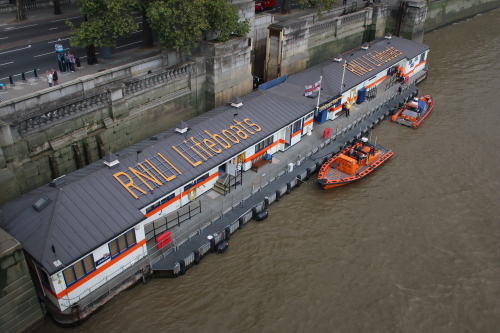
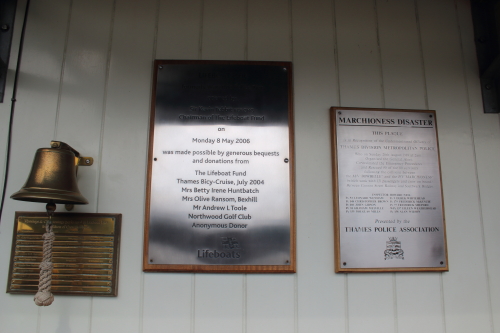
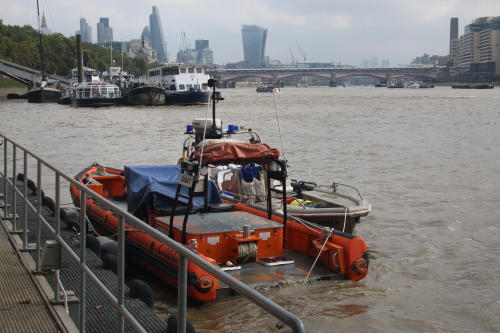
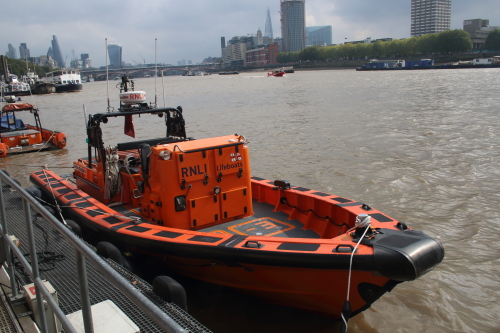
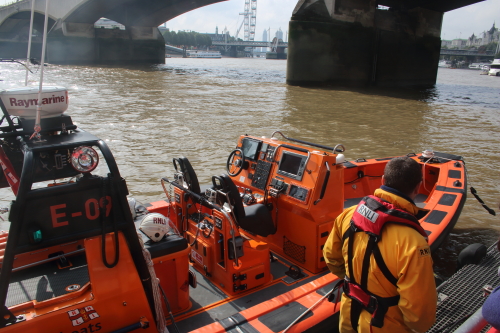
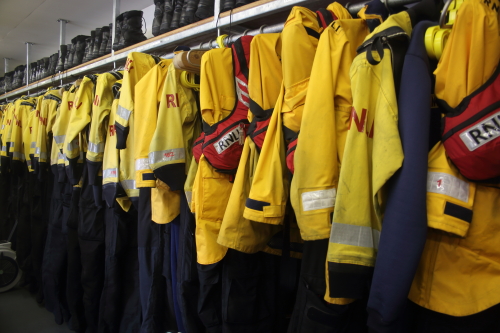
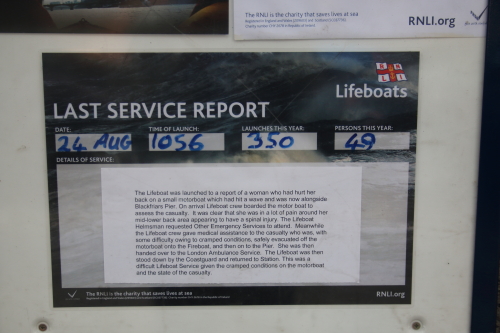
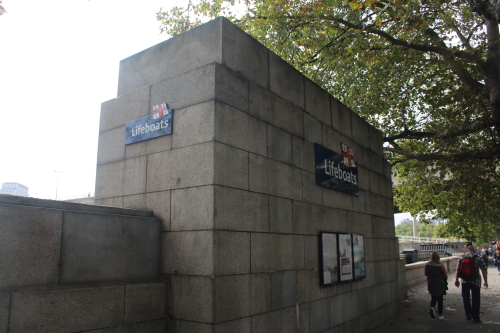






Ian great article as ever. In terms of their funding it is one of the strangest anomalies of any emergency service made even more odd by the fact that we are an island nation. As to the aberration that is a coastal lifeguard in the Thames I think that as the Tideway begins from Teddington Lock we could loosely day it is costal. Certainly (as we all know from Top Gear) the speed limit is dropped from Wandsworth effectively designating it the same as coastal waters. (There are limits but but these are under different byelaws etc before people pull me up on that)
Anyway keep up the good work!
Sam